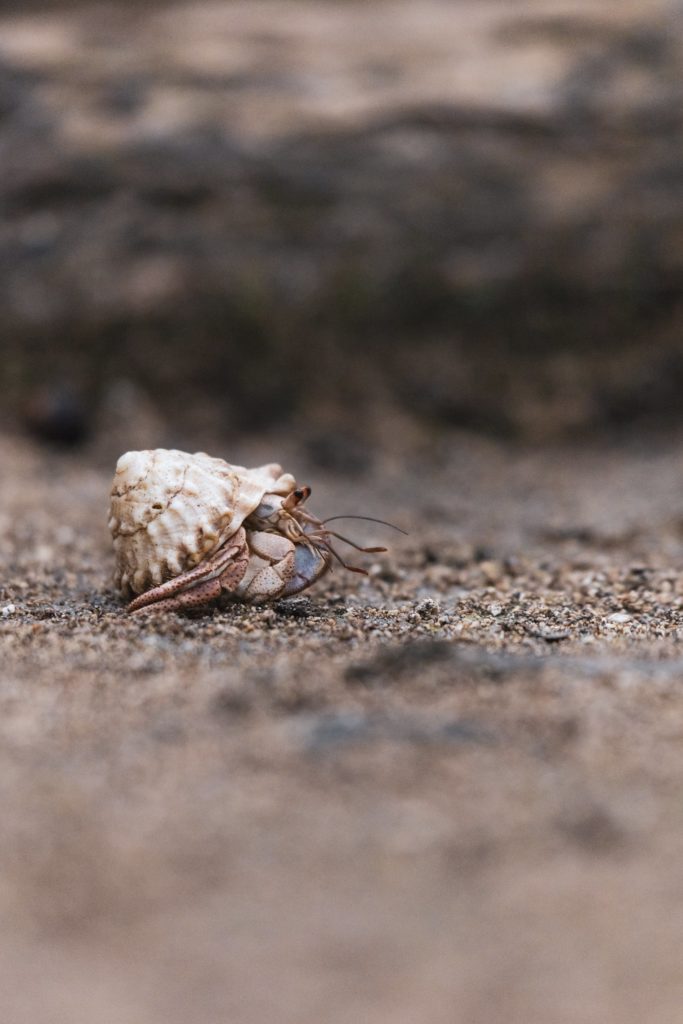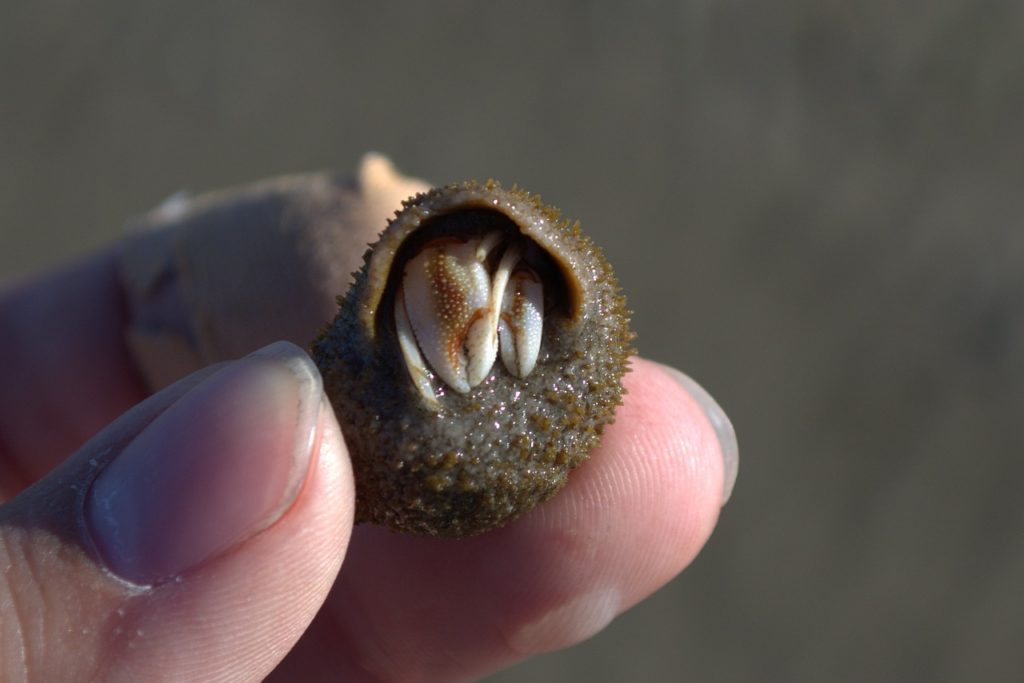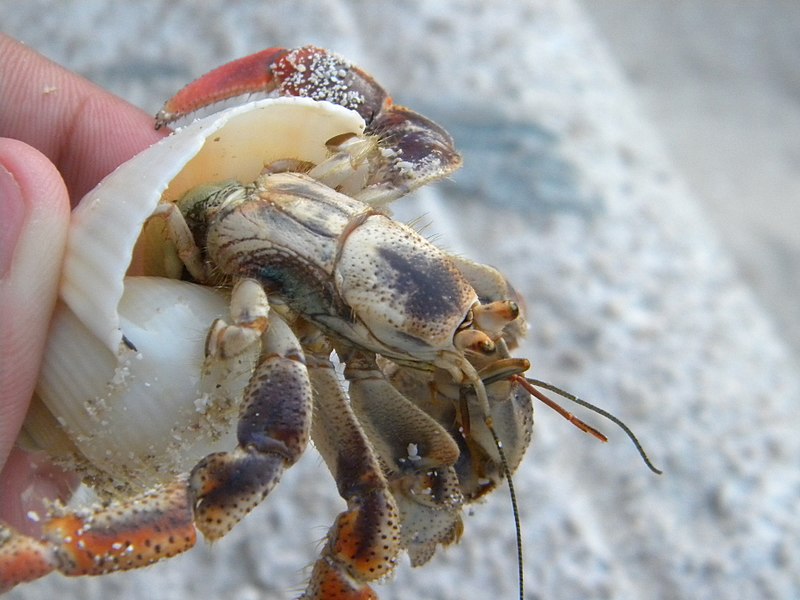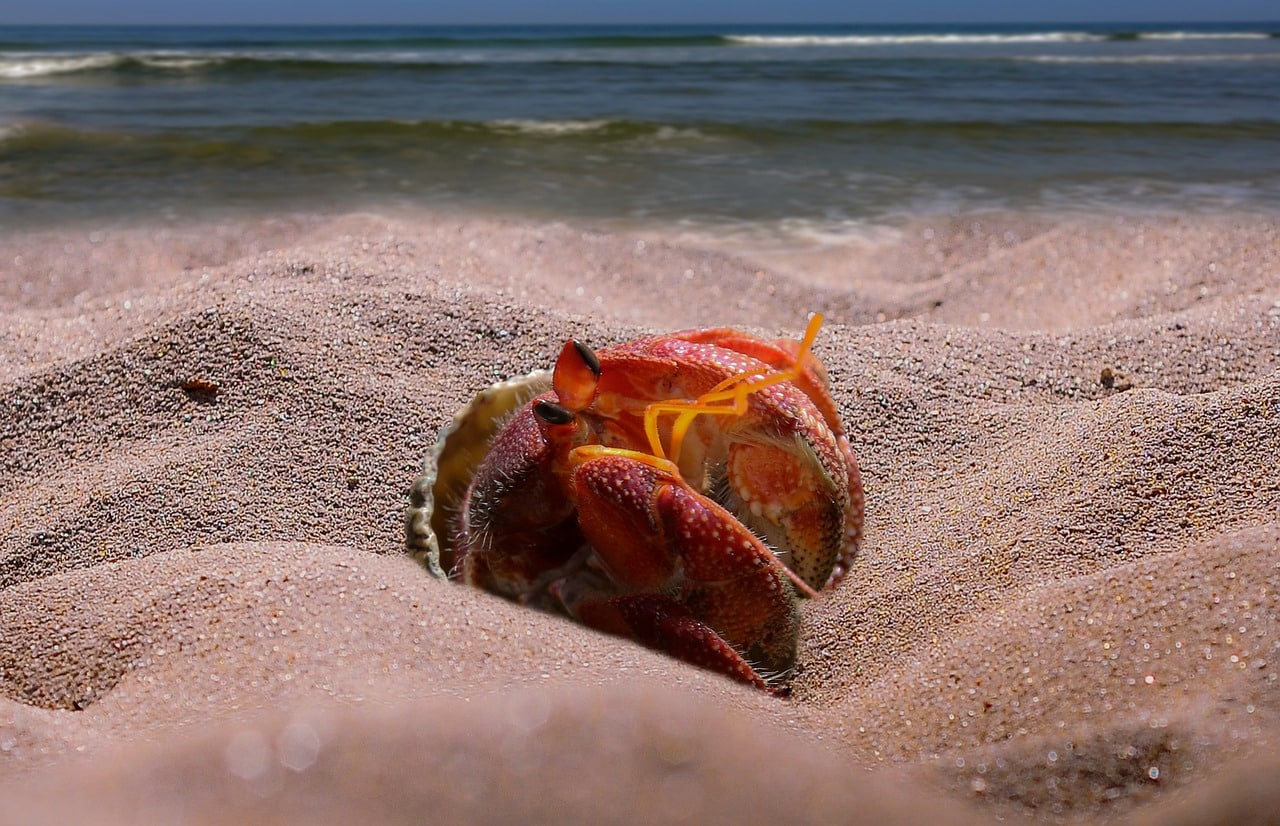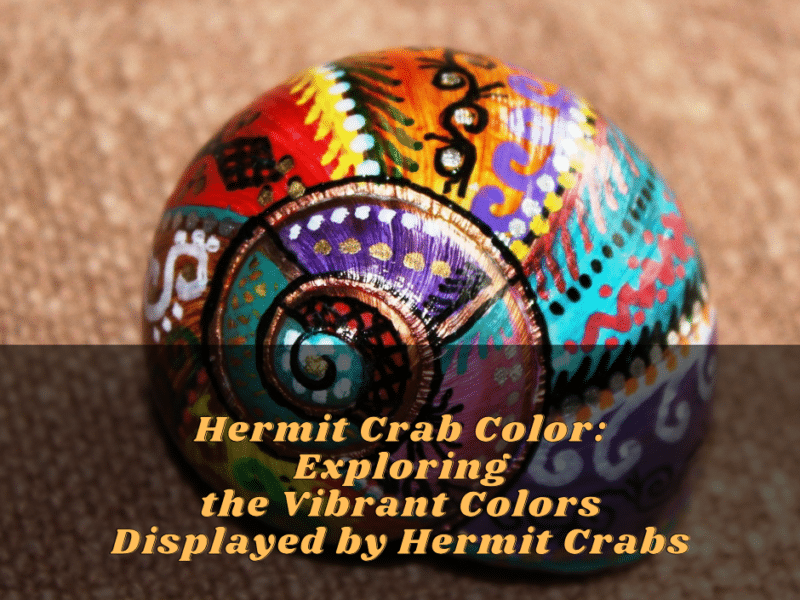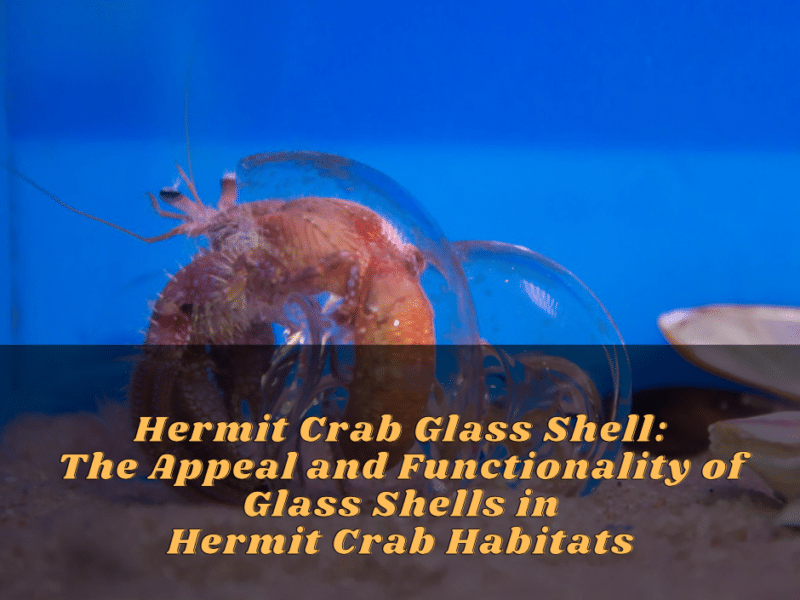Can You Eat Hermit Crabs? Introduction
The curiosity surrounding the edibility of hermit crabs
The idea of consuming hermit crabs may seem peculiar to many, considering that they are commonly seen as pets or inhabitants of aquatic exhibits. However, there is a subgroup of individuals who are curious about their edibility. Whether you are an adventurous eater, a survivalist, or simply intrigued by unusual culinary options, you might have pondered the possibility of eating hermit crabs.
The importance of exploring this culinary question
While hermit crabs are not a typical choice for consumption in most cultures, it is essential to explore the topic for several reasons. Understanding their edibility can provide insight into various aspects, including nutritional content, potential health benefits, and ethical considerations. By delving into this topic, we can gain a deeper understanding of hermit crabs as a food source and broaden our perspective on unconventional culinary options.
Examining the edibility of hermit crabs requires a comprehensive analysis that goes beyond a simple “yes” or “no” answer. In the subsequent sections, we will examine the nutritional aspects of hermit crabs, explore how they are cooked, delve into the potential health benefits, and discuss the ethical considerations that arise when considering them as food. Through a factual and objective lens, we aim to provide a well-rounded perspective on a seemingly strange culinary question. So, let’s dive in and explore the intriguing world of hermit crabs as a potential food source.
Hermit Crabs: Pets and Ecological Role
The role of hermit crabs in their natural ecosystems
Hermit crabs, also known as marine or land crabs, play a vital role in their natural ecosystems. They are commonly found in coastal regions and tropical areas, where they inhabit empty seashells or natural hollows. These crustaceans serve as nature’s recyclers by scavenging and consuming dead organisms, algae, and decaying matter. They also aid in maintaining the health of coral reefs by controlling populations of harmful algae.
Furthermore, hermit crabs contribute to the overall biodiversity of their habitats. As they move from one shell to another, they facilitate the dispersal of various organisms such as barnacles, hydroids, and bryozoans. This symbiotic relationship ensures the survival and growth of different species within the ecosystem.
The ethical considerations of consuming hermit crabs
Eating hermit crabs raises ethical questions due to their role as pets and their ecological significance. Here are some key ethical considerations related to consuming hermit crabs:
- Pets and companions: Hermit crabs are often kept as pets by individuals around the world. They are regarded as fascinating creatures and are admired for their unique behaviors and shell-changing habits. Consuming them as food may raise moral concerns as it goes against the notion of treating animals with respect and providing them a suitable environment.
- Ecological disruption: Removing hermit crabs from their natural habitats for consumption can disrupt the delicate balance of coastal ecosystems. The reduction in their population can have cascading effects on other species that rely on them for food or symbiotic relationships.
- Sustainable alternatives: With a wide variety of sustainable and ethical food options available, the choice to consume hermit crabs may be seen as unnecessary and avoidable. Opting for plant-based or alternative protein sources can help reduce the impact on ecosystems and contribute to a more sustainable food system.
While it is possible to eat hermit crabs, the ethical considerations surrounding their consumption are significant. It is important to weigh these ethical concerns against personal preferences and cultural practices when considering them as a potential food source.
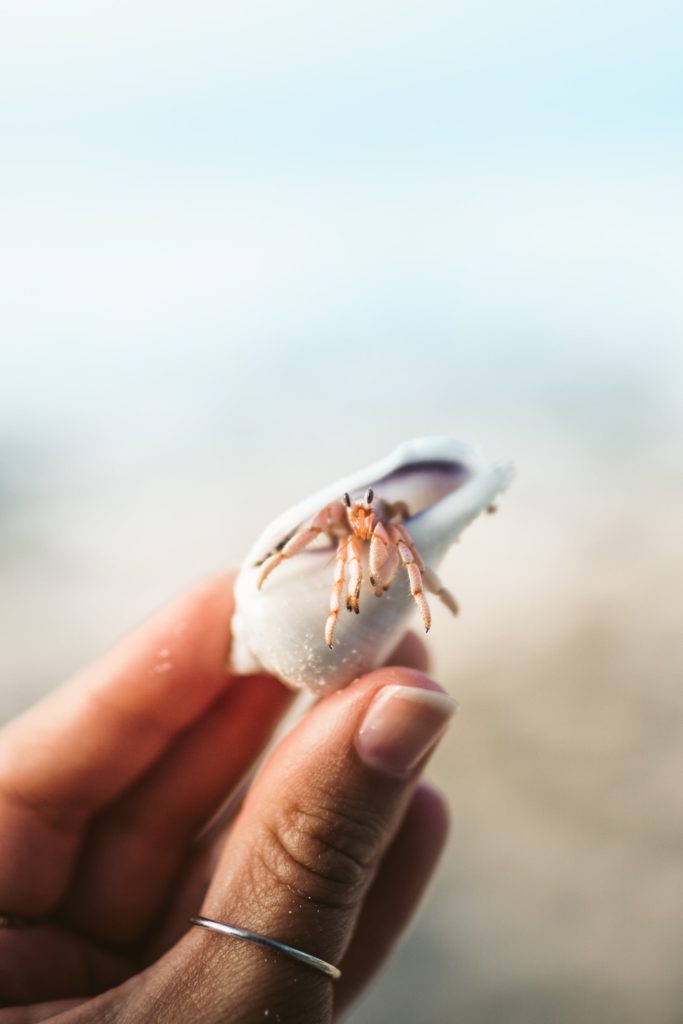
Legal Considerations
Laws and regulations related to the consumption of hermit crabs
The consumption of hermit crabs is subject to various laws and regulations, which may differ depending on the country or region. It is important to familiarize oneself with the local and national laws before considering the consumption of hermit crabs as a food source. These laws may govern the harvesting, possession, sale, and transportation of hermit crabs.
Permits and restrictions for harvesting and selling hermit crabs
In some areas, individuals or businesses may be required to obtain permits or licenses in order to legally harvest and sell hermit crabs. These permits often come with specific restrictions regarding the quantity, size, and method of harvesting. It is important to adhere to these regulations to ensure the preservation of hermit crab populations and their ecosystems.
Furthermore, it is worth noting that certain hermit crab species may be protected under wildlife conservation laws, making it illegal to deal with them commercially or possess them without proper authorization. These protections are in place to safeguard endangered or vulnerable species and prevent their exploitation.
Violations of these laws and regulations can result in penalties and fines, as well as detrimental consequences for the environment and the overall health of hermit crab populations.
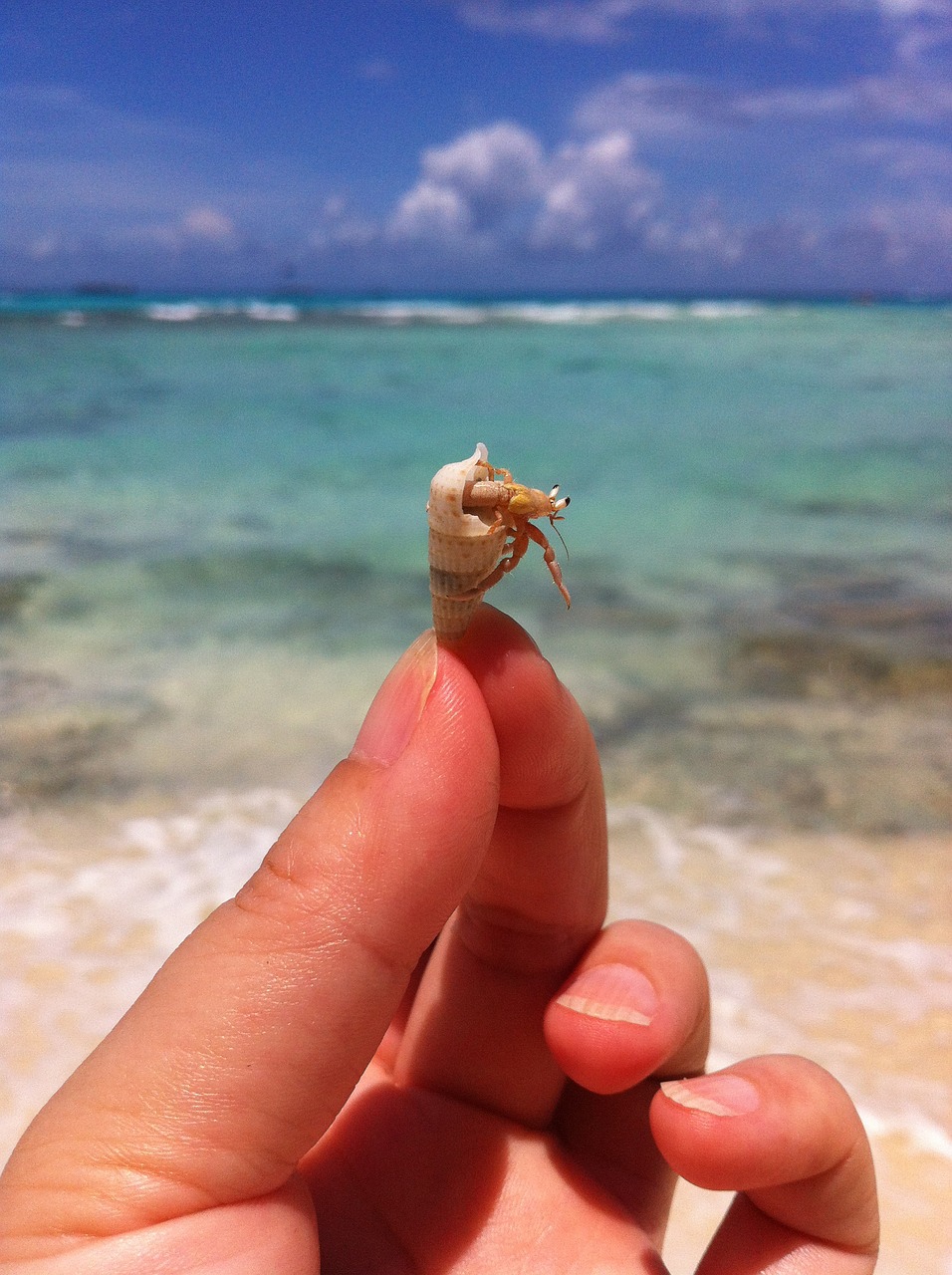
Edibility of Hermit Crabs
The nutritional value of hermit crabs
When considering the edibility of hermit crabs, it is important to assess their nutritional value. While hermit crabs are small, they do contain some nutritional benefits. They are a source of protein, vitamins, and minerals such as calcium and iron. However, their nutritional value is relatively low compared to other commonly consumed seafood and meats. Therefore, hermit crabs may not be a significant source of nutrients in a balanced diet.
Methods for cooking and preparing hermit crabs
If you decide to consume hermit crabs, it is crucial to cook them thoroughly to eliminate any potential health risks. Here are some common methods for cooking and preparing hermit crabs:
| Method | Description |
|---|---|
| Boiling | Place the live hermit crabs in boiling water for 10-15 minutes until fully cooked. This method is quick and straightforward. |
| Steaming | Steam the live hermit crabs in a steamer basket for approximately 20 minutes until they are thoroughly cooked. Steaming helps retain the natural flavors of the meat. |
| Baking | Preheat the oven to a medium-high temperature and bake the cleaned hermit crabs for about 25-30 minutes. Baking can result in a crispy texture. |
| Grilling | Clean the hermit crabs and grill them over medium-high heat for 8-10 minutes, turning them occasionally. Grilling adds a smoky flavor to the meat. |
Once the hermit crabs are thoroughly cooked, they can be served on their own or used in various recipes, such as soups, salads, or stir-fries. However, it is essential to remove the exoskeleton or shell before consumption, as it is not edible and can be challenging to chew.
Keep in mind that hermit crabs are seldom considered a regular part of human diets, and their consumption is not widespread. Considering the ethical and practical considerations surrounding their consumption, it is advisable to explore other more sustainable and widely available seafood and meat options.
Practical Considerations
Availability and accessibility of hermit crabs for consumption
When it comes to the practical considerations of eating hermit crabs, one factor to consider is the availability and accessibility of these creatures. While hermit crabs can be found in various coastal regions around the world, they are not widely available for commercial consumption. This means that it may be challenging to find hermit crabs for sale or as a menu item in restaurants. Additionally, hermit crabs are not typically bred or raised specifically for human consumption, further limiting their availability.
Culinary uses and dishes featuring hermit crabs
Hermit crabs, if consumed, can be used in various culinary preparations. They can be added to soups, salads, or stir-fries for added flavor and texture. However, it is important to note that hermit crabs are not commonly featured in traditional or popular dishes. Their use in culinary creations is limited due to their relatively small size and the effort required to prepare and clean them.
In conclusion, while hermit crabs are technically edible and can be cooked and consumed, there are practical considerations that limit their use as a food source. Their low nutritional value, limited availability, and lack of culinary popularity make them a less preferred option compared to other seafood and meat choices. Furthermore, the ethical considerations surrounding their consumption as pets and their important role in ecosystems add to the complexity of the question “Can you eat hermit crabs?” Therefore, it is advisable to explore more sustainable and widely available food options when seeking a balanced and diverse diet.
Culinary Experiences
Taste and texture of cooked hermit crabs
Cooked hermit crabs have a unique taste and texture that can be enjoyed by seafood enthusiasts. The meat of hermit crabs is delicate and sweet, with hints of crab flavor. The texture is slightly bouncy, and the meat is very tender. The slight sea-salty taste adds to the overall flavor profile without being overwhelming. These characteristics make hermit crabs a delicious and enjoyable seafood option for those who appreciate the subtle nuances of flavors.
Culinary traditions and cuisines that incorporate hermit crabs
While hermit crabs are not commonly featured in traditional or popular dishes, they can be used in various culinary creations. Their unique flavor and texture can complement a variety of dishes from different cuisines. For example:
- In Asian cuisine, hermit crabs can be added to soups or stir-fries to enhance the overall taste and provide a different texture.
- In coastal regions, hermit crabs can be part of seafood salads or served as an appetizer during seafood festivals.
- In some coastal communities, hermit crabs are used in local delicacies and specialty dishes that showcase the region’s culinary heritage.
However, it is important to note that the use of hermit crabs in culinary traditions is limited due to their relatively small size and the effort required to prepare and clean them. Additionally, their availability may vary depending on the region and local seafood markets.
In summary, the taste and texture of cooked hermit crabs offer a unique culinary experience for seafood enthusiasts. While they may not be widely available or commonly featured in traditional dishes, they can be incorporated into various cuisines to add a distinct flavor and texture. The delicate sweetness and slight sea-salty taste make hermit crabs a delicious choice for those looking to explore different seafood options.
Other Uses of Hermit Crabs
Alternative uses of hermit crabs besides consumption
In addition to being consumed as a food source, hermit crabs have other uses and purposes. These include:
- Education and Research: Hermit crabs are often kept as pets or used in educational settings to teach children and students about marine life and biology. They provide a hands-on learning experience and can help foster an appreciation for nature and wildlife.
- Reef Aquariums: Hermit crabs are sometimes used in reef aquariums to help maintain a healthy ecosystem. They can help control algae growth by eating excess algae and dead organic matter, and they also provide entertainment and visual interest for aquarium owners.
- Beach Clean-up: In some coastal areas, hermit crabs are used in efforts to clean up beaches and shorelines. These crabs can be trained to collect and dispose of small trash items, contributing to the preservation of the environment.
- Art and Crafts: The shells of hermit crabs, which they use as their home, can be collected and used in various art and crafts projects. They can be painted, decorated, or incorporated into jewelry designs, providing unique and nature-inspired creations.
Hermit crab farming for different purposes
Hermit crabs can also be farmed for commercial purposes other than consumption. These include:
| Purpose | Description |
|---|---|
| Pet Industry | Hermit crabs are popular pets, especially among children. They can be bred and sold as pets, contributing to the pet industry. |
| Bait | Hermit crabs are used as bait in recreational fishing. They are often favored by anglers for catching certain fish species. |
| Biomedical Research | Hermit crabs have been used in scientific research, particularly in studies related to regeneration and tissue regrowth due to their ability to regenerate lost limbs. |
In conclusion, hermit crabs have various uses and purposes beyond being consumed as food. They can be utilized in education, reef aquariums, beach clean-up efforts, and arts and crafts. Additionally, hermit crab farming can contribute to the pet industry, recreational fishing, and biomedical research. These alternative uses highlight the versatility and significance of these fascinating creatures in different domains.
Health and Safety Concerns
Potential risks and precautions in consuming hermit crabs
While it is technically possible to eat hermit crabs, there are several health and safety concerns to consider. These include:
- Environmental Contaminants: Hermit crabs, like other marine creatures, may accumulate environmental contaminants such as heavy metals and pollutants. Consumption of contaminated hermit crabs can pose risks to human health.
- Parasites and Diseases: Hermit crabs can harbor parasites and diseases that may be harmful to humans if consumed. Proper cooking and handling techniques are essential in minimizing such risks.
- Ethical Considerations: Some people may find the idea of eating hermit crabs ethically troubling. These creatures play important roles in marine ecosystems, and their consumption may impact their populations and habitats.
Foodborne illnesses and proper handling techniques
It is crucial to take necessary precautions to minimize the risk of foodborne illnesses when consuming hermit crabs. Here are some guidelines to follow:
- Thoroughly Cooked: Hermit crabs must be cooked thoroughly to ensure all harmful bacteria and parasites are killed. It is recommended to boil them for at least 20-30 minutes or until the meat reaches a safe internal temperature.
- Freshness and Quality: Choose live, healthy hermit crabs for consumption. Avoid those that appear weak, dead, or show signs of disease or damage.
- Proper Handling: Practice good hygiene and cleanliness when handling hermit crabs. Wash your hands thoroughly before and after handling them to minimize the risk of cross-contamination.
- Storage and Shelf Life: If you plan to consume hermit crabs, it is important to store them properly to maintain freshness and reduce the risk of spoilage. Keep them refrigerated and consume them within a few days.
By following these guidelines and taking necessary precautions, you can minimize the health risks associated with consuming hermit crabs.
Health and Safety Concerns
Potential risks and precautions in consuming hermit crabs
While it is technically possible to eat hermit crabs, there are several health and safety concerns to consider. These include:
- Environmental Contaminants: Hermit crabs, like other marine creatures, may accumulate environmental contaminants such as heavy metals and pollutants. Consumption of contaminated hermit crabs can pose risks to human health.
- Parasites and Diseases: Hermit crabs can harbor parasites and diseases that may be harmful to humans if consumed. Proper cooking and handling techniques are essential in minimizing such risks.
- Ethical Considerations: Some people may find the idea of eating hermit crabs ethically troubling. These creatures play important roles in marine ecosystems, and their consumption may impact their populations and habitats.
Foodborne illnesses and proper handling techniques
It is crucial to take necessary precautions to minimize the risk of foodborne illnesses when consuming hermit crabs. Here are some guidelines to follow:
- Thoroughly Cooked: Hermit crabs must be cooked thoroughly to ensure all harmful bacteria and parasites are killed. It is recommended to boil them for at least 20-30 minutes or until the meat reaches a safe internal temperature.
- Freshness and Quality: Choose live, healthy hermit crabs for consumption. Avoid those that appear weak, dead, or show signs of disease or damage.
- Proper Handling: Practice good hygiene and cleanliness when handling hermit crabs. Wash your hands thoroughly before and after handling them to minimize the risk of cross-contamination.
- Storage and Shelf Life: If you plan to consume hermit crabs, it is important to store them properly to maintain freshness and reduce the risk of spoilage. Keep them refrigerated and consume them within a few days.
By following these guidelines and taking necessary precautions, individuals can minimize the health risks associated with consuming hermit crabs.
Conclusion
Summary of the complex considerations surrounding the edibility of hermit crabs
In conclusion, while hermit crabs are technically edible, there are several factors to consider before consuming them. Environmental contaminants, parasites, and diseases are potential health risks that need to be addressed through proper cooking and handling techniques. Moreover, the ethical considerations surrounding their consumption cannot be ignored, as hermit crabs are commonly seen as pets and play vital roles in their natural ecosystems.
Final thoughts and perspectives on the question Can you eat hermit crabs?
The consumption of hermit crabs is complex, framed by legal, ethical, and practical considerations. While they may be edible, they are seldom seen as a food source due to the reasons mentioned above. Ultimately, the decision to eat hermit crabs should be made after carefully considering these factors and personal beliefs.
FAQ about Can You Eat Hermit Crabs: Exploring Culinary Curiosity Surrounding Hermit Crabs
Q: Can you eat hermit crabs?
A: Technically, hermit crabs can be eaten, but they are not commonly consumed as food.
Q: Are hermit crabs commonly consumed in any culture?
A: While hermit crabs are not widely consumed, some cultures in Southeast Asia have culinary traditions that include the consumption of crabs, including hermit crabs. However, it is not a mainstream practice.
Q: Are hermit crabs considered a delicacy?
A: No, hermit crabs are not typically considered a delicacy. They are more commonly appreciated for their unique appearance and behavior as pets rather than for their meat.
Q: Is it safe to eat hermit crabs?
A: It is generally safe to eat hermit crabs if they are properly cooked and sourced from a clean and reputable source. However, because hermit crabs are not commonly consumed, it is important to exercise caution and ensure their suitability for consumption.
Q: How do you prepare hermit crabs for consumption?
A: If you choose to eat hermit crabs, it is important to cook them thoroughly to eliminate any potential bacteria or parasites. The preparation and cooking methods may vary depending on regional traditions, but generally involve boiling or steaming the crabs until they are fully cooked.
Q: Do hermit crabs have any specific culinary uses or unique flavors?
A: Hermit crabs have a mild, sweet flavor that some people find enjoyable. However, it should be noted that hermit crabs are relatively small, and the amount of meat they yield is significantly less than that of other edible crabs.
Q: Are there any alternatives to eating hermit crabs?
A: If you are curious about trying crab meat, there are numerous other types of crabs that are widely consumed. Blue crabs, Dungeness crabs, snow crabs, and king crabs are just a few of the popular options available in many seafood markets and restaurants.
Q: Is it ethical to eat hermit crabs?
A: Ethical considerations regarding the consumption of hermit crabs vary among individuals. Some people advocate for the ethical treatment of all animals and choose not to consume any form of seafood, including hermit crabs. Ultimately, it is a personal decision based on one’s values and beliefs.
Q: Are there any risks associated with eating hermit crabs?
A: As with any seafood, there is always a risk of foodborne illnesses or allergic reactions. It is important to ensure the crabs are fresh, properly cooked, and sourced from reputable suppliers to minimize these risks.
Q: Can I use pet store hermit crabs for consumption?
A: It is not recommended to use hermit crabs purchased from pet stores for consumption. These crabs may be treated with chemicals or medications that are not suitable for human consumption. It is best to source hermit crabs intended for food purposes from specialized seafood markets or reputable suppliers.
Ultimately, while hermit crabs are technically edible, they are not commonly regarded as a culinary delicacy. The common preference is to appreciate their intriguing presence and charm as pets rather than to include them on our dinner plates. If you do decide to try hermit crabs as food, be sure to source them from reliable sources and cook them thoroughly to ensure safety.

